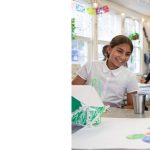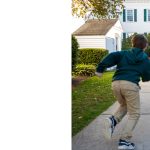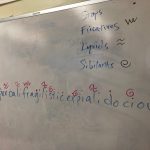Syllables and Sibilants… What’s the Difference?
Posted by Eric SnowPoetry is one of those subjects that often elicits groans from sixth grade students, and it did when we first announced that we would be reading Love That Dog, an introduction to poetry by Sharon Creech. Whether it’s because students feel overwhelmed by a new form of writing, or, like the protagonist in the book, don’t think they have what it takes to be poets, students don’t generally get excited about reading and writing poetically.
But that changed this year.
In addition to the normal poetic devices of alliteration, assonance, consonance, syllables, rhyme, and repetition, we introduced students to some foundational linguistic information and helped them think about sound in new ways. “Speech sounds” might not sound like a difficult topic, but remembering, analyzing, and incorporating stop, fricative, liquid, and sibilant sounds into their own poetry has been an incredibly fun experience.
- Stops are harsh consonant sounds that seem to “stop” without going much further (ex: b, c [hard], d, g [hard], k, p, q, t sounds).
- Fricatives are vibrating sounds made with friction between the teeth, lips, and tongue (ex: f, gh/j, v, ch, th sounds).
- Liquids are smooth, resonant sounds that can carry on much like vowels (ex: l, m, n, r, w, and y [sometimes] sounds).
- Sibilants are hissing or shushing sounds (ex: c [soft], s, sh, z, zh sounds).
Almost every sound in the English language can be broken down into these four categories (with sub-categories below them, which students can investigate in college if they’re so inclined).
The great excitement of doing this in middle school, though, is how much fun the kids have making the sounds, and then noticing how poets use them (intentionally or not) to create interesting and engaging lines and rhythm in the poems we read.
During the weeks of this unit, one could find sixth graders around the Humanities rooms counting syllables on their fingers, making sounds that sounded like beatboxing snakes, and drawing funny symbols (see the image at the top!) above all sorts of complex words. The goal was to break down words, by sound (rather than letter), to notice commonalities and differences between various consonant sounds.
And wow did this really help improve their poetry (which you can see on display in the Humanities rooms)!
← Perfecting our Persuasive Practice! Equity, Diversity and Inclusion Groups for Parents and Students →














